
In September 2022 Oxbow's bookshop and distribution buisness merged with Pen & Sword Books, a family run independent publisher of history books. The book distribution aspect of our business will continue to bring you some of the best books in the field of archaeology and related disciplines as Casemate UK. The Oxbow Books publishing imprint remains as a separate entity, still sold and distributed exclusively by us.
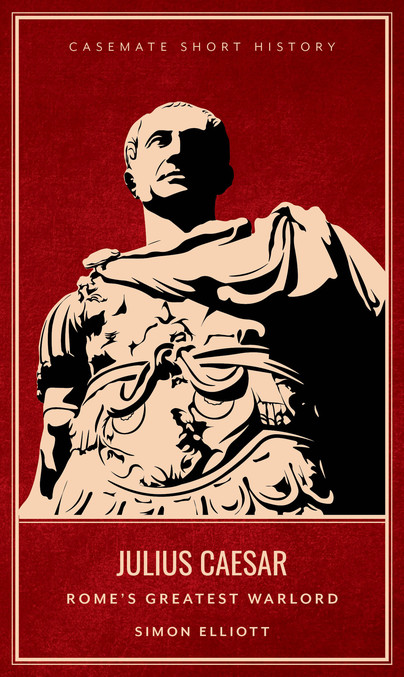
Format: Hardback
Pages: 160
ISBN: 9781612007090
Pub Date: 31 Oct 2019
Series: Casemate Short History
Illustrations: 30 black and white photos and diagrams
Description:
Julius Caesar has been the inspiration to countless military commanders over the last two millennia. Born into an aristocratic family, his early military campaigns, part of his progression along the cursus honorum, included campaigning in the east, Spain and in the early Roman civil wars. His participation in the Gallic Wars is known mainly through the commentary on the wars that he wrote and published, along with his incursions into Britain.
This concise history details his military life, and how it impacted with his political career, from his youth through the civil wars that resulted in his becoming the dictator of Rome, and his legacy.
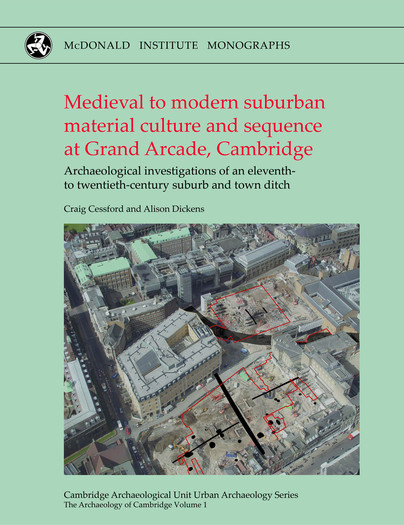
Format: Hardback
Pages: 495
ISBN: 9781902937786
Pub Date: 31 Oct 2019
Series: Cambridge Archaeological Unit Urban Archaeology Series
Description:
This is the first volume describing the results of the CAUs excavations in Cambridge and it is also the first monograph ever published on the archaeology of the town. At 1.5 hectares the Grand Arcade investigations represent the largest archaeological excavation ever undertaken in Cambridge, significantly enhanced by detailed standing building recording and documentary research.
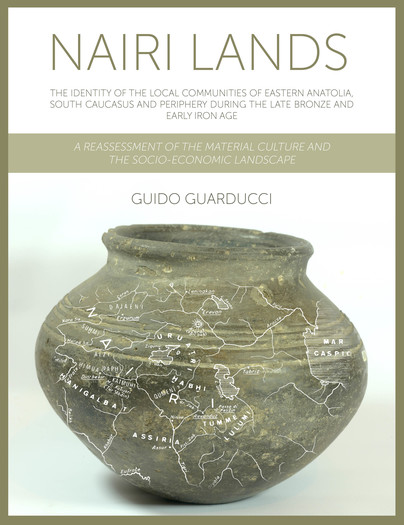
Format: Hardback
Pages: 272
ISBN: 9781789252781
Pub Date: 31 Oct 2019
Illustrations: b/w and colour
Description:
This study analyses the social and symbolic value of the material culture, in particular the pottery production and the architecture, and the social structure of the local communities of a broad area encompassing Eastern Anatolia, the South Caucasus and North-western Iran during the last phase of the Late Bronze Age and the Early Iron Age. This broad area is known from the Assyrian texts as ‘Nairi lands’. The second part of the study, furnishes a reassessment of pottery production characteristics and theories, as well as of the socio-economic structure and issues, tied to the sedentary and mobile local communities of the Nairi lands.
The study brings into focus the characteristics, the extension and the distribution of Grooved pottery, along with other pottery typologies, by providing an accompanying online catalogue with detailed descriptions and high-resolution images of the pots and sherds obtained from public and private institutions in Turkey and Armenia. Moreover, the socio-political organisation and subsistence economy issues are addressed in order to advance a possible reconstruction of the social structure of the Nairi lands communities. Particular attention is devoted to the pastoral nomad component and the role played within the Nairi phenomenon. The study includes a very large corpus of text images and high-resolution color images of the pottery of the area under examination, gathered by the author in order to offer a reliable tool and compendium.
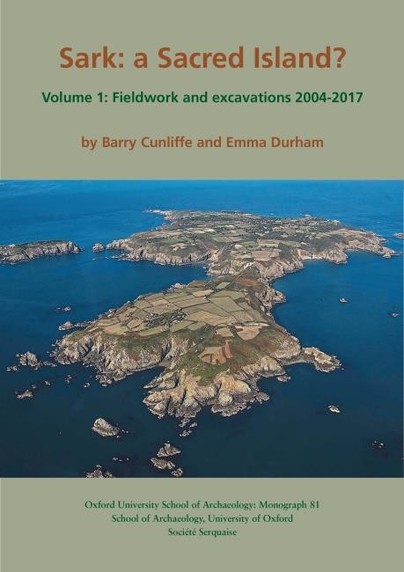
Format: Hardback
Pages: 280
ISBN: 9781905905461
Pub Date: 31 Oct 2019
Series: Oxford University School of Archaeology Monograph
Illustrations: b/w and colour
Description:
Sark came briefly to prominence in 1719 when the Sark hoard was found – a pot containing Gaulish coins and embossed silver plaques. It was brought to England and disappeared. The Archaeological Survey of Sark began in 2004 with a view to studying the island in the context of Atlantic maritime networks to explore the themes of remoteness and connectivity.
Fieldwork organized through the School of Archaeology, University of Oxford has been carried out annually and continues. A complete gazetteer of nearly 100 sites has been compiled together with a full listing of all the artefacts recovered. Notable are the large number of Neolithic stone axes, many made from the local dolerite, and the widespread use of local serpentine to make amulets Sark: a sacred island contains full reports on eight archaeological excavations including details of an early Neolithic settlement, a middle Neolithic ritual site, a Beaker cist burial a Mid–Late Bronze Age settlement, a Gallo-Roman ritual site (from which the Sark hoard came) and an early Medieval farm. Results of surveys of a Dark Age monastery and 16th century French fortifications are also given.
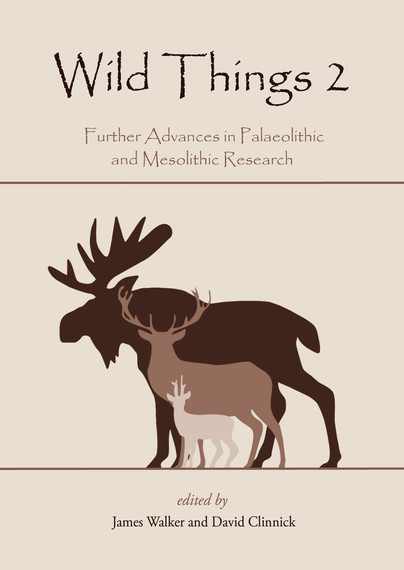
Format: Paperback
Pages: 208
ISBN: 9781785709463
Pub Date: 31 Oct 2019
Description:
Building on the first Wild Things volume (Oxbow Books 2014) which aimed to showcase the research putting archaeologists researching the Palaeolithic and Mesolithic at the cutting edge of understanding humanity’s past, this collection of contributions presents recent research from an international group of both early career and established scientists.Covering aspects of both Palaeolithic and Mesolithic research in order to encourage dialogue between practitioners of archaeology of both periods, contributions are also geographically diverse, touching on British, European, North American and Asian archaeology. Topics covered include transitional periods, deer and people, stone tool technologies, pottery, land-use, antler frontlets, and the development of prehistoric archaeology an 'age of wonder'.
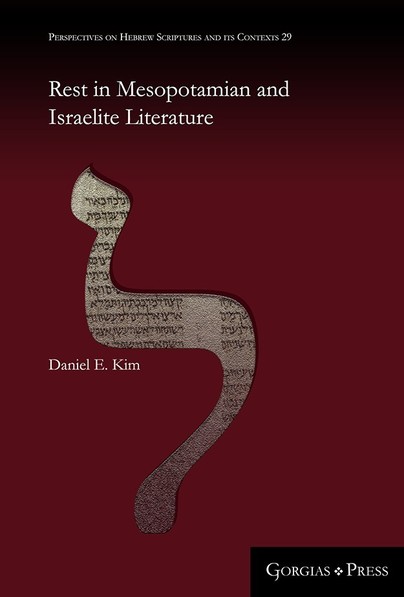
Format: Hardback
Pages: 329
ISBN: 9781463207090
Pub Date: 29 Oct 2019
Series: Perspectives on Hebrew Scriptures and its Contexts
Description:
Rest in Mesopotamian and Israelite Literature studies the concept of rest in the Hebrew Bible and ancient Near Eastern literature. Through close examination of Mesopotamian texts and selections from the Deuteronomistic History and Chronicles, Kim delineates a concept of rest for each body of literature, and employs a comparative approach to illuminate the rest motif in the Hebrew Bible in light of Mesopotamian literature.
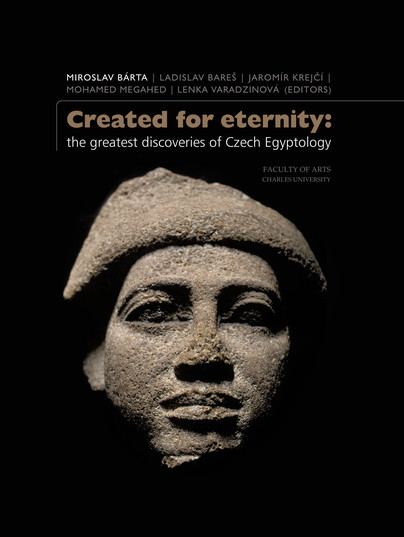
Format: Hardback
Pages: 387
ISBN: 9788073089276
Pub Date: 24 Oct 2019
Description:
In 2019 Charles University, its Faculty of Arts, and the Czech Institute of Egyptology are celebrating the hundredth birthday of Czech Egyptology. It is an important centenary not only for us, but for archaeology globally. For many years now Czech Egyptologists have been among world leaders in the field, making major breakthroughs (most recently the discovery of the tomb of the priest Kaires) – and helping to set new international research trends.
This book presents the most important discoveries of Czech Egyptologists and the range and variety of their activities.
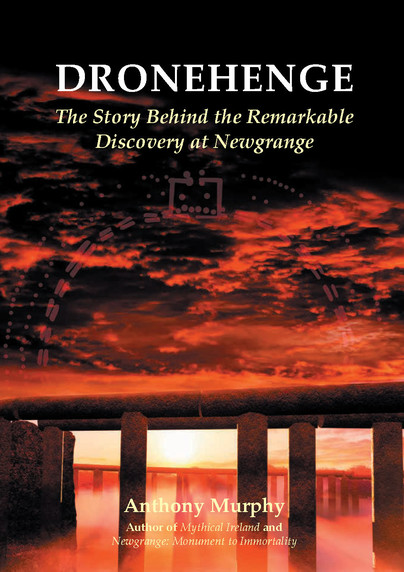
Format: Paperback
Pages: 250
ISBN: 9780995792791
Pub Date: 18 Oct 2019
Illustrations: 75 colour photographs
Description:
In July 2018, Anthony Murphy and Ken Williams discovered a giant previously unknown monument close to Newgrange while flying their drones over the Boyne Valley. They found what archaeologists believe to be a Late Neolithic henge monument, measuring 154 metres (just over 500 feet) in diameter, and a number of other mysterious and intriguing features. Their discoveries became an internet and media sensation and made headlines all around the world.
In the days, weeks and months that followed, there was intense interest in these gigantic relics of the prehistoric world. Archaeologists pored over the drone imagery and the National Monuments Service conducted their own helicopter flights over Brú na Bóinne World Heritage Site to capture the features in more detail. In Dronehenge, Anthony Murphy tells the story of the remarkable discovery of this monument, and attempts to unravel some of its mysteries. Anthony describes the events that followed the first social media post about the discovery and how he spent three weeks doing little else but taking phone calls, answering emails and engaging in Skype calls with media all around the world. Lavishly illustrated, Dronehenge includes discussion of how this monument might have been constructed and what it might have been used for, and includes 3D models of its likely appearance. Anthony explains how the henge, along with the other features discovered, completely changes our view of the Brú na Bóinne landscape, and why it will have archaeologists and historians studying them for many years to come.
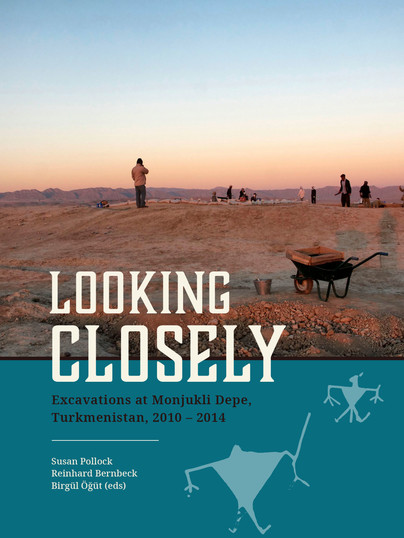
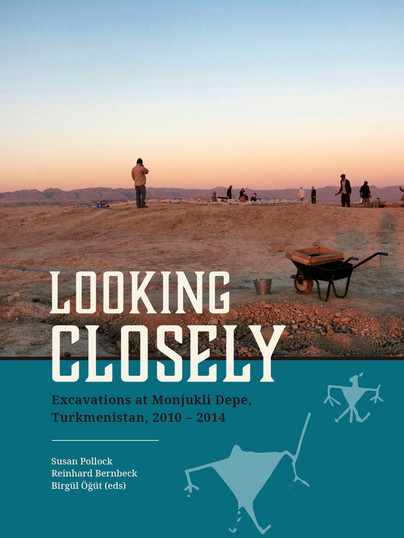
Pages: 500
ISBN: 9789088907678
Pub Date: 10 Oct 2019
Illustrations: 195fc/117bw
Pages: 500
ISBN: 9789088907654
Pub Date: 10 Oct 2019
Illustrations: 195fc/117bw
Description:
Soviet archaeological research in southern Turkmenistan revealed a series of small Late Neolithic and Aeneolithic villages strung along the streams that emerge from the Kopet Dag and water the narrow foothill zone separating the mountains from the Kara Kum desert. A commonly accepted premise of their work was that these communities garnered their technological knowledge if not their populations from regions to the south and west in present-day Iran.Since 2010 we have reinvestigated one of these sites, the small Late Neolithic (ca.
6200-5600 BCE) and early Aeneolithic (ca. 4800-4350 BCE) village of Monjukli Depe. Our research examines microhistories of cultural techniques as a source of insights into long-term and spatially extensive change as well as internal variations and similarities in material practices. This volume presents results of this work. A Bayesian modeling of 14C dates demonstrates a long hiatus between the Neolithic and Aeneolithic strata of the site as well as a hitherto unattested very early Aeneolithic phase (“Meana Horizon”). A sequence of densely built, well preserved Aeneolithic houses exhibits marked similarities to earlier Neolithic architecture in the region. Despite overall standardized plans, the houses reveal significant variations in internal features and practices. Similar flexibility within a set of common dispositions is evident in burial practices. Very limited quantities of pottery offer a stark contrast to the frequent occurrence of spindle whorls, indicating a substantial production of thread, and to a large and varied assemblage of clay tokens. A wide variety of fire installations attests to routinized handling of fire, which did not prevent at least one building from succumbing to a conflagration. Animal herding was heavily based on sheep and goats, while cattle figured prominently in feasts. The Meana tradition at Monjukli Depe exhibits significant structural similarities to other early village societies in Western Asia and will make this volume of interest to scholars working on similar times and contexts.
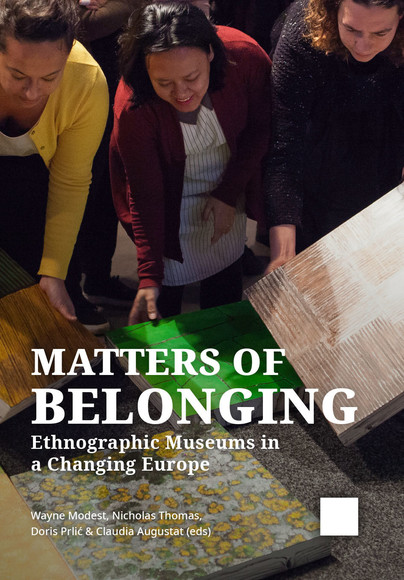
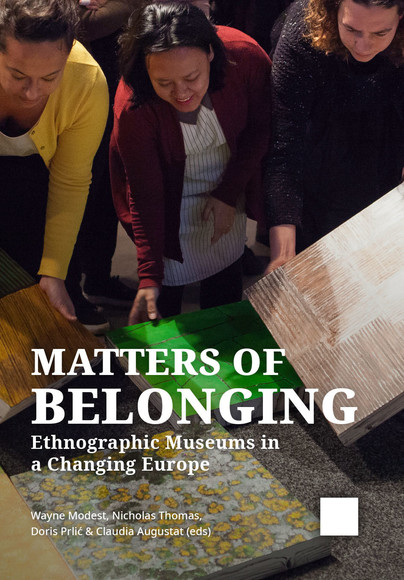
Pages: 150
ISBN: 9789088907784
Pub Date: 10 Oct 2019
Illustrations: 25fc/16bw
Pages: 150
ISBN: 9789088907777
Pub Date: 10 Oct 2019
Illustrations: 25fc/16bw
Description:
Matters of Belonging foregrounds critical practices within ethnographic museums in relation to their diverse stakeholders, with a special focus on collaboration with artists and differently constituted, self-identified communities. The book emerges from the EU-funded project SWICH (Sharing a World of Inclusion, Creativity and Heritage) that places ethnographic museums at the centre of ongoing debates about Europe’s shifting polity and questions around heritage, citizenship and belonging. Addressing diverse political climates and citizenship regimes, legal frameworks and colonial/migratory histories, the articles seek to question the role of ethnographic and world cultures museums within contemporary negotiations of how to define Europe, Europeans, and European heritage, especially mindful of the region’s colonial and migratory pasts.
The book is neither celebratory nor congratulatory, and does not depict a triumphal overcoming by ethnographic museums of their troubled pasts. Its aim is to think critically about these museums’ responses, to identify both pitfalls and positive developments, and to sketch out possible futures for museums generally, and ethnographic museums specifically, as they try to locate themselves within discussions about Europe and its futures. Core to the book’s argument is that it may exactly be in their entanglement with the colonial past that these museums can become important sites for thinking about colonial entailments in the present. Facing up to this past is the beginning of addressing these larger legacies. The authors suggest that the ethnographic museum has been the site not just for trenchant questioning of colonial durabilities in contemporary Europe, but also for the development of new practices – of collaboration and authority-sharing, of recognition and belonging. The book explores these models, not as complete, but as a starting point to push forward new practices.
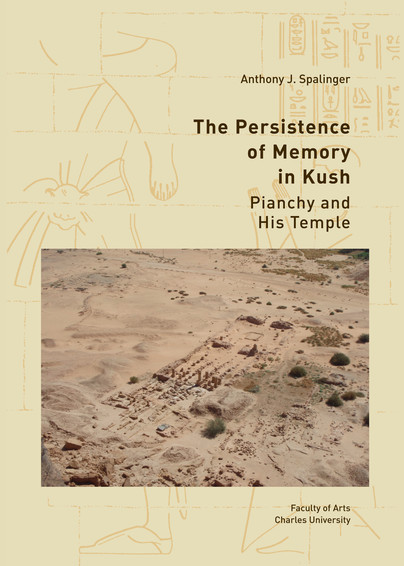
Format: Hardback
Pages: 192
ISBN: 9788073089160
Pub Date: 05 Oct 2019
Description:
A Report concerned with military reliefs in the Great Temple at Gebel Barkal in Nubia, the present Sudan (B 500), important battle scenes in the Great Temple's inner hall (B 502) and the outer one (B 501).
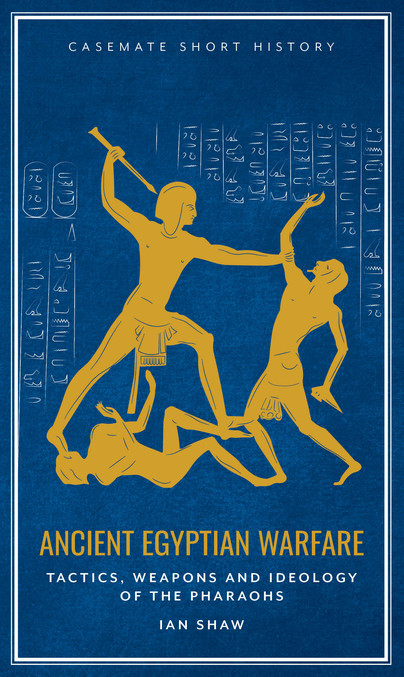
Format: Hardback
Pages: 160
ISBN: 9781612007250
Pub Date: 30 Sep 2019
Series: Casemate Short History
Illustrations: 30 black and white photos and diagrams
Description:
A concise introduction to Ancient Egyptian warfare from the Neolithic period through to the Iron Age, covering everything from battle tactics to weaponry and battle injuries. The excellent preservation of Egyptian artefacts including bows, axes and chariots, means that it is possible to track the changing nature of Egyptian military technology, as well as the equipment and ideas that were adopted from other civilisations of the Eastern Mediterranean and Near East. As well as discussing such crucial issues as military strategy, martial ideology, construction of fortresses and waging of siege warfare, this book includes the study of practical questions of life, death and survival of individual soldiers on the battlefield.
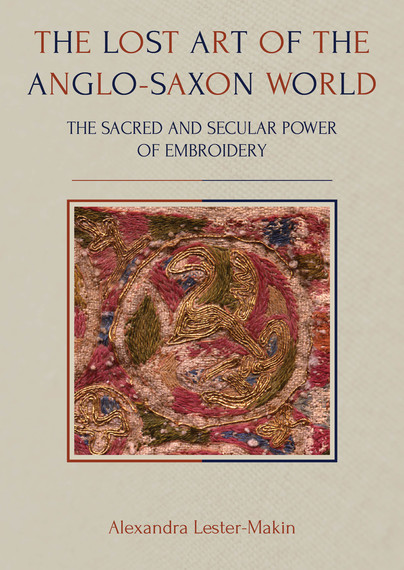
Format: Paperback
Pages: 256
ISBN: 9781789251449
Pub Date: 30 Sep 2019
Illustrations: b/w and colour
Description:
This latest title in the highly successful Ancient Textiles series is the first substantial monograph-length historiography of early medieval embroideries and their context within the British Isles. The book brings together and analyses for the first time all 43 embroideries believed to have been made in the British Isles and Ireland in the early medieval period. New research carried out on those embroideries that are accessible today, involving the collection of technical data, stitch analysis, observations of condition and wear-marks and microscopic photography supplements a survey of existing published and archival sources.
The research has been used to write, for the first time, the ‘story’ of embroidery, including what we can learn of its producers, their techniques, and the material functions and metaphorical meanings of embroidery within early medieval Anglo-Saxon society. The author presents embroideries as evidence for the evolution of embroidery production in Anglo-Saxon society, from a community-based activity based on the extended family, to organised workshops in urban settings employing standardised skill levels and as evidence of changing material use: from small amounts of fibres produced locally for specific projects to large batches brought in from a distance and stored until needed. She demonstrate that embroideries were not simply used decoratively but to incorporate and enact different meanings within different parts of society: for example, the newly arrived Germanic settlers of the fifth century used embroidery to maintain links with their homelands and to create tribal ties and obligations. As such, the results inform discussion of embroidery contexts, use and deposition, and the significance of this form of material culture within society as well as an evaluation of the status of embroiderers within early medieval society. The results contribute significantly to our understanding of production systems in Anglo-Saxon England and Ireland.
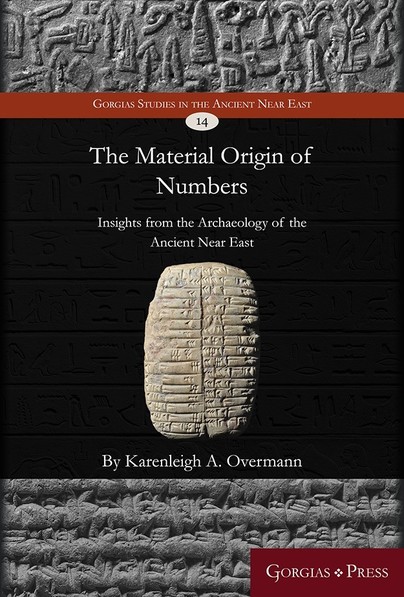
Format: Hardback
Pages: 310
ISBN: 9781463207434
Pub Date: 25 Sep 2019
Description:
The Material Origin of Numbers examines how number concepts are realized, represented, manipulated, and elaborated. Utilizing the cognitive archaeological framework of Material Engagement Theory and culling data from disciplines including neuroscience, ethnography, linguistics, and archaeology, Overmann offers a methodologically rich study of numbers and number concepts in the ancient Near East from the late Upper Paleolithic Period through the Bronze Age.
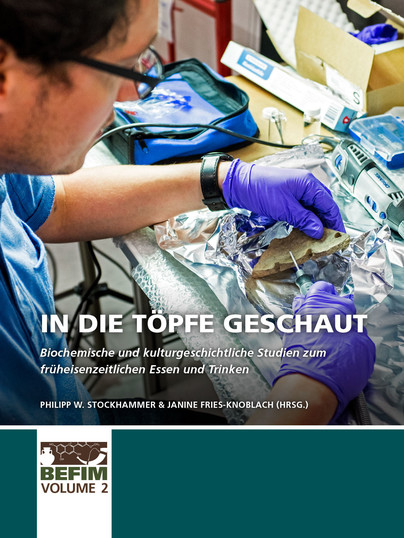
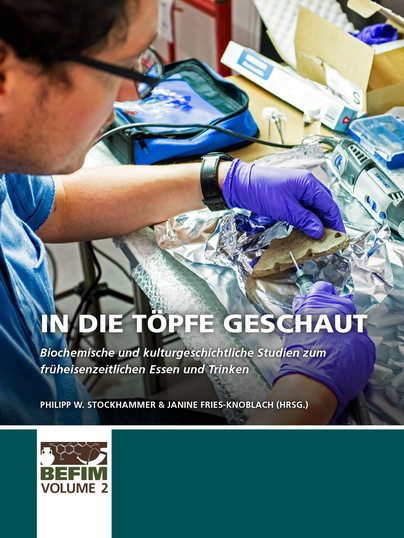
Pages: 330
ISBN: 9789088907708
Pub Date: 24 Sep 2019
Series: BEFIM
Illustrations: 100fc/10bw
Pages: 330
ISBN: 9789088907685
Pub Date: 24 Sep 2019
Series: BEFIM
Illustrations: 100fc/10bw
Description:
Abstract German: Band 2 der BEFIM-Reihe enthält sieben Beiträge des BEFIM-Teams und enger Kooperationspartner. Die Zwischenberichte aus Band 1 werden darin vertieft, abgeschlossen und in Gesamtinterpretationen eingebettet. Ein einleitender Artikel befasst sich einführungs- und überblicksartig mit der Aussagekraft von Biomarkern und Isotopenanalysen bei der Untersuchung alter organischer Reste.
Den Kern bilden drei Aufsätze, die den eigentlichen archäologisch-naturwissenschaftlichen Ergebnissen von BEFIM gewidmet sind. Der erste Beitrag bettet die Nahrungsrückstandsanalysen an Keramik aus den Altgrabungen (1950-85) sowie aus den jüngeren Ausgrabungen in der Vorburgsiedlung (2004-08) bzw. auf dem Plateau der Heuneburg (2015) in ihren archäologischen Kontext ein. Die Keramik aus relevanten Befundzusammenhängen erlaubt hierbei eine räumlich und zeitlich differenzierte Betrachtung bezüglich Ess- und Trinkgewohnheiten und Gefäßnutzung. Im zweiten Teil werden die Analyseergebnisse für lokale und importierte Keramik aus den alten, jüngeren und laufenden Grabungen auf dem und um den Mont Lassois mit Befundkontexten und formenkundlichen Aspekten verbunden. Auf diese Weise gelingt ein Vergleich des Gebrauchs unterschiedlicher Gefäßformen und gattungen in den verschiedenen Siedlungsbereichen. Als drittes werden die Ergebnisse der Nahrungsrückstandsanalysen zum Breisacher Münsterberg in ihrem archäologischen Zusammenhang präsentiert. Darauf folgt ein Aufsatz zur musealen Umsetzung der BEFIM-Ergebnisse im Landesmuseum Württemberg in Stuttgart. Den Abschluss bilden zwei geschlechtergeschichtliche Beiträge zur Frage von Alkohol in der Lebenswelt von Frauen in alten Kulturen Europas und des Nahen Ostens unter den Aspekten von Herstellung, Ausschank, Handel, Kulthandlungen und Konsum sowie zu Geschlechterklischees bei der Interpretation eisenzeitlicher Prunkgräber. Der Band richtet sich mit seinen teils generellen, teils speziellen Aufsätzen an ein breites akademisches Publikum von Universitäten, Museen und Denkmalpflege sowie an Studierende und interessierte Laien.Abstract English:Volume 2 of the BEFIM series contains seven papers by the BEFIM team and close co-operation partners. The interim reports of BEFIM 1 are enhanced, finalised, and integrated into overall interpretations. An introductory paper provides insights into and an overview of the potential of biomarker and isotopic analysis in studying ancient organic residues. The core of the book consist of three articles on the final archaeo-scientific results of BEFIM. The first one integrates the organic residue analyses (ORA) of pottery from the old excavations (1950-85) and recent excavations at both the Vorburg settlement (2004-08) and on the plateau (2015) of the Heuneburg into their archaeological contexts. The pottery from relevant find contexts allows for a spatially and temporally differentiated view of eating and drinking habits and vessel usage. The second paper combines the ORA results of local and imported pottery from early, younger, and current excavations on and around the Mont Lassios with excavation contexts and aspects of vessel shapes. By doing so, it becomes possible to compare the use of different vessel shapes and wares in each of the settlement zones. The third text presents the results of food residue analyses from Breisach-Münsterberg in their archaeological context. This is followed by an article on the museological implementation of BEFIM’s results in the Landesmuseum Württemberg in Stuttgart. The volume ends with two gender-historical contributions, one on the question of alcohol in the female sphere of life in ancient cultures of Europe and the Near East with regard to production, distribution, trade, ritual, and consumption, the other on gender stereotypes in the interpretation of ostentatious Iron Age graves. The volume with its partly general, partly specific papers aims at both a wide academic audience (universities, museums, heritage authorities) and at students and interested non-professionals.
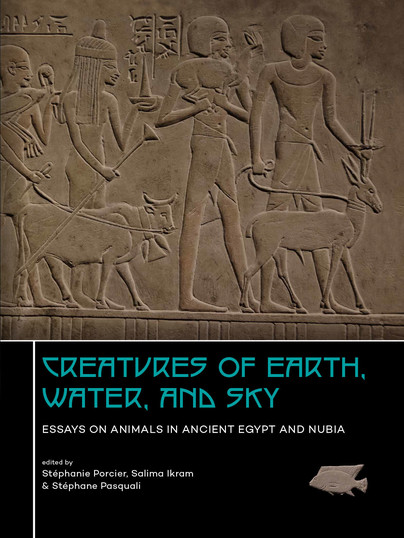
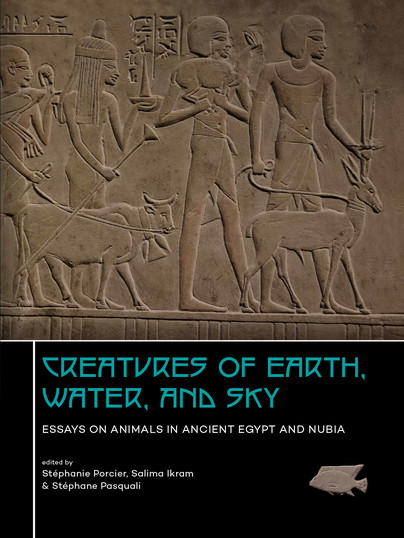
Pages: 310
ISBN: 9789088907715
Pub Date: 22 Sep 2019
Illustrations: 125fc/75bw
Pages: 310
ISBN: 9789088907722
Pub Date: 22 Sep 2019
Illustrations: 125fc/75bw
Description:
Ancient Egyptians always had an intense and complex relationship with animals in daily life as well as in religion. Despite the fact that research on this relationship has been a topic of study, gaps in our knowledge still remain. This volume presents well over 30 contributions that explore Human-Animal relationships from the Predynastic to the Roman period.
The essays cover topics such as animal husbandry, mummification, species-specific studies, the archaeology and economy of the animal cults, funerary practices, iconography and symbolism. The contribution of archaeometrical methods, such as DNA analyses, balms’ analyses, AMS dating, radiography, and 3D imaging, are also represented as these play a significant role in furthering our understanding of the human-animal relationship in Egypt. The range of subject matter and contributors are indicative of the importance of animals and the role that they played in ancient Egypt and Nubia, and emphasises the need for continued inter- and multidisciplinary studies on the subject. The research outlined in this volume has helped, for example, to better identify ways of sourcing the animals used in mummification, contributed to establishing the eras during which animal mummification became common, and highlighted new techniques for acquiring DNA. The fresh insights and diversity of topics makes the volume of interest for professionals (Egyptologists, (archaeo-)zoologists and historians), as well as those who are interested in Egyptology and in the relationship between humans and animals. ‘Creatures of Earth, Water and Sky’ is the result of the first international conference ever dedicated to animals in ancient Egypt and Nubia (the International Symposium on Animals in Ancient Egypt, ISAAE 1, June 1-3 2016, held in Lyon).





















